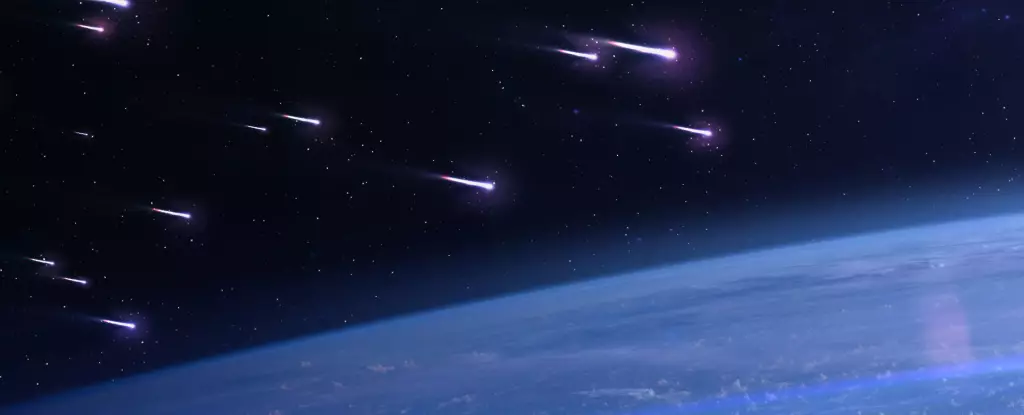The Leonid meteor shower, renowned for its breathtaking displays and significant historical meteor storms, presents an enchanting experience for sky watchers. This year, enthusiasts are again encouraged to keep their gaze directed toward the heavens, reflecting on past spectacles while anticipating future possibilities. My own encounter with the Leonids roots back to the late 90s during my service in the US Air Force when the celestial dance unfolded over the arid landscape of Kuwait. The vivid imagery of that night still lingers in my memory—bright meteors streaking across the sky, illuminating the desert like cosmic flashes.
Observing meteors is not just about witnessing streaks of light; it’s about understanding a recurring astronomical cycle. Every 33 years, the Earth aligns with the fine debris trails left behind by comet 55P/Tempel-Tuttle, the source of the Leonids. This cosmic ballet introduces us to the thrilling concept of prognosticating future meteor displays; hence, why stargazers are looking toward November’s skies this year.
Despite 2024 being projected as an off-year, enthusiasts should not dismiss the upcoming meteor shower scheduled to peak on November 17th at approximately 4:00 Universal Time (UT). Under ideal viewing conditions, observers might catch around 15 to 20 meteors per hour, with European skies experiencing optimal visibility in the early dawn hours. However, the excitement doesn’t end there. Scholars like Jérémie Vaubaillon from the Paris Observatory have noted that in the days leading up to November 17th, Earth may intersect with significant fragments from prior orbits of the comet.
These encounters include dust trails originating from as far back as 1633 and 1733. Particularly intriguing is the 1733 stream, thought to be a progenitor of the notable 1866 meteor storm. Expectations of these old trails fostering increased activity have ignited a buzz among meteor enthusiasts. Observing the night of November 14th could provide clues about the potential intensity of the display to follow.
While anticipation builds, certain challenges may dampen the viewing experience. In mid-November, the waxing gibbous moon will dominate the night sky, casting a bright glow that threatens to obscure the visibility of fainter meteors. Meteor rates are likely to diminish with increasing moonlight, creating a contrast that starlit enthusiasts will have to navigate.
In recent years, the Leonids have maintained a consistent hourly rate of around 20 meteors, providing moderate yet consistent displays. However, meteor storms—characterized by rates surpassing 500 meteors per hour—bring a wild excitement that meteor watchers often crave. The most remarkable instances were recorded in 1966 when rates skyrocketed to an astounding 150,000 per hour. With scintillating history behind the showers, the potential for future displays keeps the passion alive.
The early morning hours remain the prime time for celestial viewing, as this is when Earth faces directly into the stream of debris that produces the meteors. The radiant, or point of origin in the constellation Leo, provides a focal point from which meteors can be traced. Observers are advised to aim their telescopes or cameras towards this area while also scanning the broader sky.
Using a tripod-mounted camera can significantly enhance the experience. Setting the lens to the widest possible aperture while allowing for automated exposures creates an engaging experience. This strategy enables the observer to enjoy a steaming cup of tea, a winter necessity, while soaking in the celestial show unfolding above.
While 2024 may not herald a vibrant eruption of the Leonids, the cosmic clock continues to tick toward subsequent peak years. The 2030s hold potential for stronger displays as the Earth orbits back into more substantial trails left by comet 55P/Tempel-Tuttle. Nonetheless, this year’s opportunities should not be disregarded entirely; one never knows when a surprise meteoric display may illuminate the night sky.
Nurturing an interest in celestial events like the Leonid meteor shower opens a window to understanding not just a mere spectacle but the vast universe’s underlying rhythms and wonders. The anticipation of future encounters only deepens the appreciation for this ageless cosmic performance—a reminder to keep looking up, lest we miss the extraordinary in the night sky.


Leave a Reply